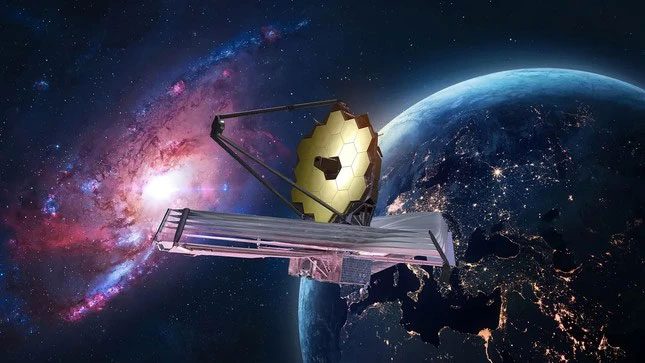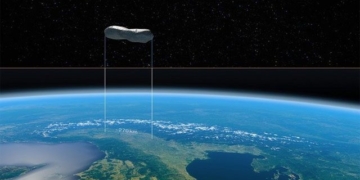On the occasion of the second anniversary of the launch of the James Webb Space Telescope (JWST), scientists have noted that it has provided astonishingly accurate new observations that could potentially overturn the standard model of cosmology.
Debate Over the Composition of the Universe
Nearly a century ago, astronomer Edwin Hubble discovered the rapid acceleration of all galaxies moving away from each other. However, in the past decade, new physics has emerged that may require the modification or even replacement of the 40-year-old theory, which is now the subject of heated debate.
Adam Riess, a professor of astronomy at Johns Hopkins University in the United States and the leader of the team conducting the new JWST measurements, stated: “There is a disagreement that makes us question whether we really understand the composition and physical properties of the universe.”

James Webb Space Telescope.
Reiss, Saul Perlmutter, and Brian P. Schmidt won the 2011 Nobel Prize in Physics for their discovery in 1998 regarding dark energy, the mysterious force behind the accelerating expansion of the universe.
Astronomers agree that the universe began with a bang. Soon after, the young universe formed: an expanding, boiling mixture of plasma with matter and antimatter particles appearing, only to annihilate each other upon contact.
As the universe ballooned like a balloon, the standard narrative unfolded, with ordinary matter (which interacts with light) coalescing around invisible dark matter clumps to create the first galaxies, connected by a vast cosmic web.
Initially, as the components of the universe spread out, the energy density and thus its expansion rate decreased. However, about 5 billion years ago, the galaxies began to recede again, this time at an increasing speed.
Many predictions of the model have been confirmed with high accuracy, but here is where the problem begins: astronomers still do not know what dark matter or dark energy is.
Ofer Lahav, a professor of astronomy at University College London, who is involved in dark galaxy surveys, stated: “Most people agree that the current composition of the universe consists of 5% ordinary atomic matter; 25% cold dark matter; and 70% dark energy. The fact is we do not understand the latter two.”
Is Cosmology in Crisis?
David Gross, former director of KITP and a Nobel laureate, remarked at an astronomy conference: “Cosmology is in crisis.”
A study by Keeley, published on September 15 in the journal Physical Review Letters, found that if cosmological models need correction anywhere, it is likely in the very early universe.
Keeley noted that it might be possible to add some dark energy before the cosmic microwave background emerged, thereby enhancing the expansion of the universe without necessarily deviating from the standard model.
However, once astronomers placed the sun at the center of the solar system in newer models, the outliers eventually became irrelevant.
Lahav commented: “If we want to philosophize, perhaps that is what is happening. But perhaps there is also dark matter and dark energy that remains to be discovered.”
Astronomers are seeking answers in various places. Upcoming experiments, such as the CMB-S4 project in Antarctica and the Simons Observatory in Chile, are searching for clues in ultra-precise measurements of radiation from the early universe. Others will examine dark matter maps created by ESA’s Euclid space telescope or future dark energy surveys conducted by the Dark Energy Spectroscopic Instrument.
So far, some astronomers have only observed stars in one galaxy but have noted discrepancies compared to measurements from the Hubble telescope.


















































